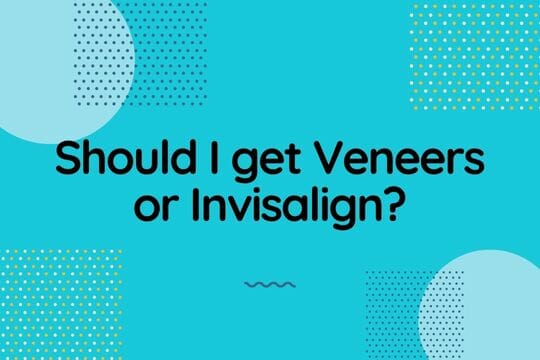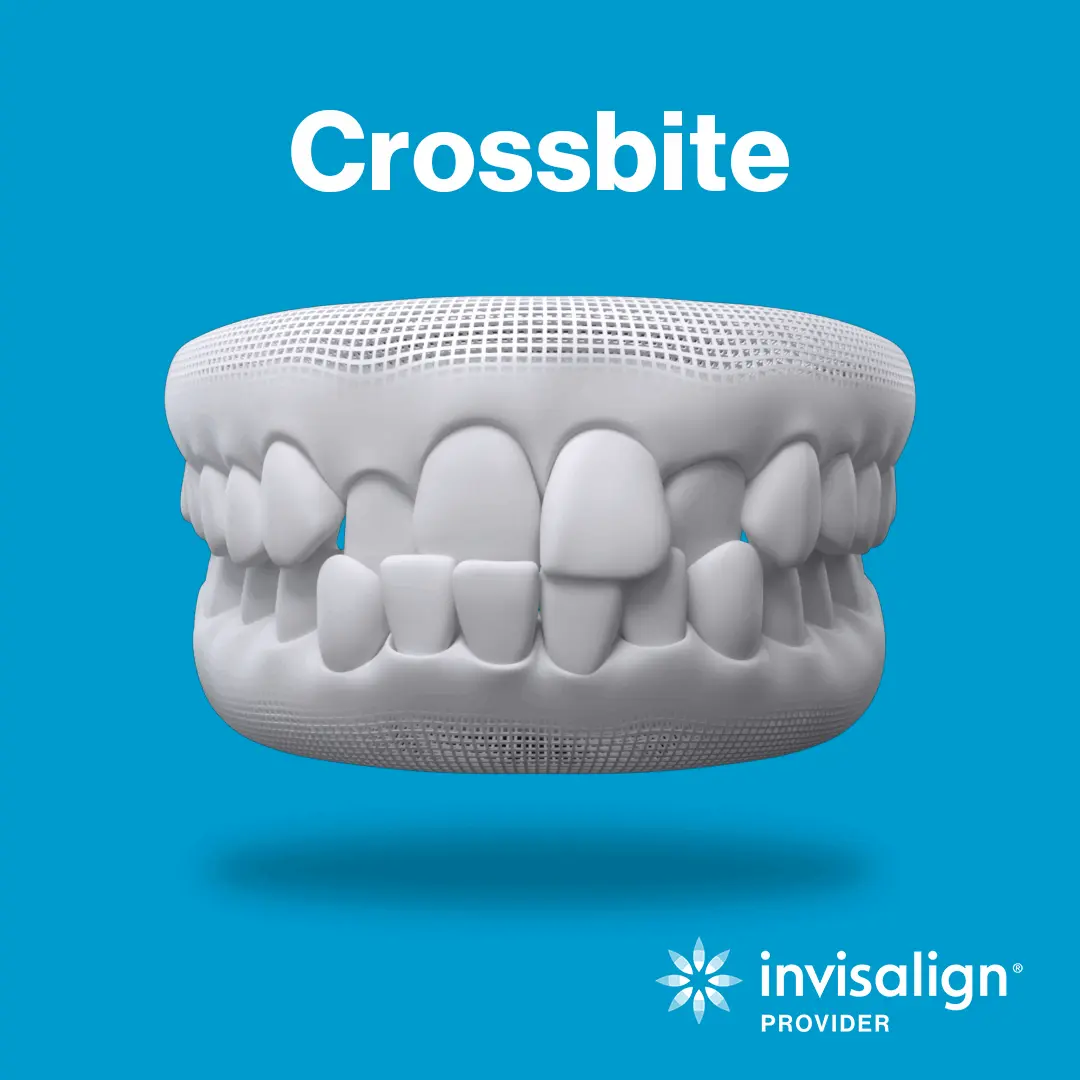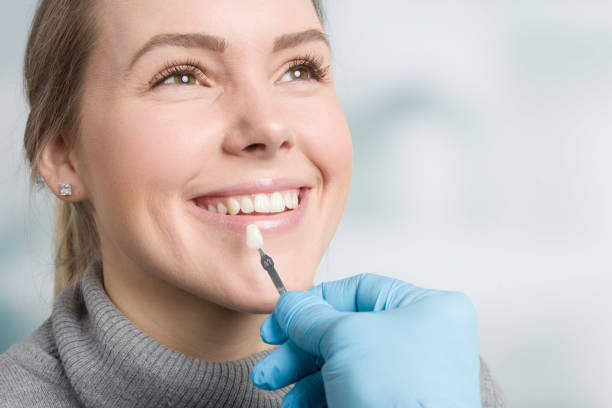
If you’re considering straightening your smile, you might wonder whether Invisalign or veneers are your best options. Both methods reshape your teeth and or give them a straighter look, but each dental treatment works differently in helping you achieve a beautiful smile. Here are some of the pros and cons of both types of treatment so that you can make an informed decision.
For those who feel self-conscious about their smile, there are a variety of options available such as Invisalign and veneers. Both Invisalign and veneers can help you correct and improve the appearance of your smile, but each solution works differently in helping you achieve that perfect smile. But which one will work best for you?
Whether you should go with Invisalign or veneers depends on what type of smile correction you want. Are you looking to straighten just a few teeth, or do you want to transform your smile completely? Do you want to whiten your teeth or hide discoloration? How much money are you willing to spend?
You may benefit from either treatment if you answered yes to some or all of those questions. However, each treatment has advantages and disadvantages, so you’ll want to consider each option carefully before choosing which one is best for you.

Over 5 million people have used the popular orthodontic system to straighten their teeth. Orthodontists or cosmetic dentists use Invisalign, which works like traditional metal brackets, except it doesn’t require wires or bands to hold the teeth together. Instead, the innovative orthodontic system utilizes removable plastic aligners, which are worn over the course of two weeks at a time. Each tray moves the teeth gradually until they are fully aligned.
The treatment can help to correct issues such as crooked teeth, crowded teeth, gaps between teeth, and bite issues.
Many patients find that their Invisalign treatments last anywhere from six to eighteen months. While some people have shorter treatments than others, the length of Invisalign treatment varies depending on numerous factors. Your dentist may be able to estimate the length of your treatment based on your specific needs.
The entire treatment process varies depending on several different factors. For example, the length of treatment may depend on whether your teeth are misaligned, how your bite is, and whether there are additional issues such as missing teeth or gum disease. Other factors may prolong the overall treatment period, such as not following the recommended hygiene procedures or not wearing the clear aligner trays for the prescribed length of time.
Invisalign provides numerous benefits to those who are looking to straighten their teeth. These benefits include:
Treatment is easy to use and nearly invisible – If you’re concerned about the appearance of your teeth while you’re getting your teeth straightened, then you’ll be happy to know that aligners from Invisalign are made with a patented material known as SmartTrack. This flexible plastic allows for clear aligners that are virtually undetectable to others.
Invisalign flexibility – Traditional metal braces have been around for decades and remain one of the most popular orthodontic treatments. However, this type of brace has some drawbacks. For instance, patients cannot take their braces off unless the entire set of brackets, wires, and elastic bands are removed. Oral hygiene becomes more challenging because food and bacteria can become trapped inside the wire mesh and cause severe issues down the road.
Invisalign offers a different approach to orthodontics – Instead of using metal braces, Invisalign uses clear plastic aligners which fit over each tooth individually. Each invisible aligner lasts approximately two weeks before switching to the next tray.
No Food Restrictions – Invisalign offers patients a way to straighten their teeth without restrictions. Unlike traditional braces, there are no limits to what you can eat. Simply remove your trays when you’re hungry and eat whatever you want! Then put them back in when you’re done.
Comfort – Metal braces can poke your cheeks or cause irritation when they rub against them. Invisalign aligner trays are made from a soft clear plastic material that won’t irritate your mouth. These aligners are custom fitted and are comfortable to wear, so you won’t feel them poking or rubbing against your teeth.
Invisalign is the clear alternative to braces – It gets results faster than traditional braces, and the entire treatment process is approximately 12 – 16 months, whereas traditional braces take 24 months or longer.
Invisalign may seem like a perfect fit for some patients. However, there are some downsides to this popular orthodontic treatment. Here are some disadvantages with this type of treatment.
Adjustment time to clear aligners – The first few days of wearing them can be uncomfortable and challenging, as you get used to having something in your mouth all the time. You may even experience a little bit of pain or discomfort at first, but this should only last for about a week.
Wear your Aligners as directed by your dentist – Invisalign treatment is all about compliance. You must wear your aligners for at least 22 hours per day. Patients who fail to wear their aligners regularly may have trouble achieving the desired orthodontic result within the prescribed length of time and may need to wear their aligners longer than expected to achieve their goals.
You might need to brush and floss your teeth more often – When wearing Invisalign braces, it’s essential to maintain good dental hygiene. Brushing your teeth and flossing is one of the most effective ways to maintain healthy gums and prevent cavities. Having to constantly carry around a toothbrush and toothpaste is inconvenient, but avoiding dental problems is worth it.
Cost of Invisalign – The national average cost for orthodontics is around $5000. However, many different factors can affect this number. Some patients may pay less, and others may have to pay more as it depends on whether you have dental insurance, how much they may cover, what type of treatment is needed, and other factors. Contact your local dentist for more pricing information to learn more about how much orthodontics costs.

The ideal Invisalign candidate is someone who wants the freedom to eat what they want and is looking for a way to improve their smile, and they don’t want to compromise on comfort or convenience.
Invisalign is a good option for adults who want to straighten their teeth without having metal brackets or wires attached to their teeth. However, Invisalign isn’t suitable for children who have yet to grow all of their permanent teeth because the clear aligners don’t have room for baby teeth. Patients also have to commit to wearing their aligners as directed by their dentist, and not wearing them as instructed will prolong your treatment or prevent you from achieving the smile you want.
The Invisalign treatment is designed to correct certain types of malocclusions such as close gaps between the teeth, adjust certain types of bites, help with overcrowding, and improve the patient’s overall smile. Invisalign cannot treat every dental concern when severe malocclusion is present. In situations like this, traditional orthodontics may be the better treatment option.
Dental veneers are a popular form of cosmetic dentistry that allows patients to address various aesthetic concerns with one simple treatment. Porcelain veneers are thin sheets of porcelain bonded to the front of teeth to improve their appearance. Veneers can change a tooth’s color, cover cracks or chips, or smooth the surface of the teeth. They can also help close spaces between two teeth and make teeth appear larger.

While there are different types of veneers, porcelain veneers are the most common type because they are removable and require little maintenance. It takes approximately two to three visits, and when the veneer is ready, it is bonded to the front surface of the tooth, making it look much whiter and brighter than the surrounding teeth. Here are some of the reasons why porcelain veneers may be a good option for you.
Easy process – Porcelain veneers allow patients to improve their smiles with minimal downtime and discomfort.
Treat mutiple dental concerns – With veneers, you can improve the appearance of your natural teeth by whitening them, covering a gap or space, or covering up a cracked or chipped tooth.
Long lasting solution – With a good oral hygiene routine and dental visits, dental veneers can last an average of 10-15 years.
Improve Your Confidence – Whether you want to whiten your stained teeth or repair a chipped, cracked, or other problem area, veneers can give you a boost of confidence with a straighter smile.
Porcelain veneers can be an excellent choice for many dental patients, but they have some drawbacks. Here are a few:
Cosmetic treatment only – While porcelain veneers can be used to improve the appearance of certain teeth, they aren’t intended to correct orthodontic issues like crooked teeth or tooth decay. To address these concerns, you may need to consider orthodontics.
Veneer color stays the same – Over time, your teeth naturally darken or lighten in color based on your diet and other habits. With porcelain veneers, they stay the same color for the life of the veneer, which can be fine if you have a complete set. However, if you only have a few veneers or just one covering your front tooth, your natural teeth will likely look different than the veneer and become more noticeable to others.
Veneer process is irreversible – When you get a veneer, the dentist will file down your tooth’s surface. Once you have veneers, you can’t reverse the procedure unless you agree to have your tooth permanently replaced.

When choosing between Invisalign and veneers, it’s important to remember the primary goal of each treatment method. Both can improve your smile, but Invisalign works to correct alignment issues, while veneers are used primarily for cosmetic purposes such as correcting color, size, shape, and some minor dental damage issues.
When deciding whether Invisalign or veneers would be best for you, it’s important to consult a dentist who can help you make the right decision during the treatment plan phase. For some people, both options might work, but for others, just one or neither will work. At the end of the day, it depends on the individual’s overall oral health and their smile goals.
When comparing the two options, it might seem that veneers are the better choice. The average Invisalign treatment costs $2500-$5000, while porcelain veneers cost between $925 and $2500 per tooth. If you have to correct a single tooth or only a couple, veneers might be the better option. However, Invisalign will be the more cost-effective option if you have to restore multiple teeth.
When deciding between veneers and Invisalign, you should consider your dental health and treatment goals. Both veneers and Invisalign require that you have healthy teeth as neither treatment will correct dental issues such as tooth decay, cavities, or gum disease. If you have oral health issues, you may not be a suitable candidate for either treatment option and your cosmetic dentist will recommend fixing your dental issues before starting your dental treatment.
If you have good oral health and you’d like to improve your smile or fix chips, cracks, or other imperfections in your teeth, veneers could be the perfect solution for you. If you’d like to correct an overbite or underbite with orthodontic treatment, Invisalign may be a better choice.
Invisalign treatment length – Invisalign is an excellent option if you’re looking for a fast solution to straighten your teeth, but it may not be the best option if you want to see results as soon as possible. Invisalign has been shown to take an average of 12 months, with some patients taking longer as it depends on their teeth.
Dental Veneer treatment length – If you’re looking for more immediate results, veneers may better suit your needs. Veneers are bonded directly onto your teeth, which means they can be completed in just two to three dental office visits.
Invisalign works if you have a veneer. Invisalign clear aligners are designed to move your teeth slightly every 2 weeks until they are in the proper position and then maintain them there. So, whether you’re wearing a veneer or not, the Invisalign system will still work just fine!
Yes, teeth can shift after veneers. The process of getting veneers involves a dentist removing enamel from the tooth to make room for the porcelain veneer. This can cause some movement of the teeth, which usually subsides over time.
If you notice that your teeth are becoming more crooked or misaligned after getting veneers, it’s important to see your dentist as soon as possible. There are a few things that can be done to fix this problem, including adjusting the bite or using orthodontic retainers.
Yes, it is recommended you wear a nightguard if you have veneers. If you have bruxism (teeth grinding), you should wear a nightguard to prevent damage to your veneers.
Nightguards are designed to protect your teeth and gums from damage caused by bruxism or teeth grinding. If you grind your teeth at night, you put yourself at risk for gum disease and tooth loss—and even if you don’t grind your teeth, it’s still important to wear a guard because of the forces involved in clenching and releasing your jaw can be damaging over time.
As your local cosmetic dentist near the Allen and Fairview area, we are here to help you with any questions or concerns that you might have about keeping your smile healthy. If you want to learn more about the Invisalign process, dental veneers, have questions about straighter teeth, feel free to contact us for a consultation appointment, and we’ll be happy to help with your smile goals. To schedule your initial consultation, contact Sloan Creek Dental, and our friendly staff will be happy to assist you. You can reach us at our Fairview, TX dental office to schedule an in-person consultation with us today – 972-468-1440.
Our dental office is located in Fairview, Texas, and our patients visit us from across the surrounding areas, including Allen, Plano, McKinney, and Lucas.
We firmly believe that the internet should be available and accessible to anyone, and are committed to providing a website that is accessible to the widest possible audience, regardless of circumstance and ability.
To fulfill this, we aim to adhere as strictly as possible to the World Wide Web Consortium’s (W3C) Web Content Accessibility Guidelines 2.1 (WCAG 2.1) at the AA level. These guidelines explain how to make web content accessible to people with a wide array of disabilities. Complying with those guidelines helps us ensure that the website is accessible to all people: blind people, people with motor impairments, visual impairment, cognitive disabilities, and more.
This website utilizes various technologies that are meant to make it as accessible as possible at all times. We utilize an accessibility interface that allows persons with specific disabilities to adjust the website’s UI (user interface) and design it to their personal needs.
Additionally, the website utilizes an AI-based application that runs in the background and optimizes its accessibility level constantly. This application remediates the website’s HTML, adapts Its functionality and behavior for screen-readers used by the blind users, and for keyboard functions used by individuals with motor impairments.
If you’ve found a malfunction or have ideas for improvement, we’ll be happy to hear from you. You can reach out to the website’s operators by using the following email
Our website implements the ARIA attributes (Accessible Rich Internet Applications) technique, alongside various different behavioral changes, to ensure blind users visiting with screen-readers are able to read, comprehend, and enjoy the website’s functions. As soon as a user with a screen-reader enters your site, they immediately receive a prompt to enter the Screen-Reader Profile so they can browse and operate your site effectively. Here’s how our website covers some of the most important screen-reader requirements, alongside console screenshots of code examples:
Screen-reader optimization: we run a background process that learns the website’s components from top to bottom, to ensure ongoing compliance even when updating the website. In this process, we provide screen-readers with meaningful data using the ARIA set of attributes. For example, we provide accurate form labels; descriptions for actionable icons (social media icons, search icons, cart icons, etc.); validation guidance for form inputs; element roles such as buttons, menus, modal dialogues (popups), and others. Additionally, the background process scans all of the website’s images and provides an accurate and meaningful image-object-recognition-based description as an ALT (alternate text) tag for images that are not described. It will also extract texts that are embedded within the image, using an OCR (optical character recognition) technology. To turn on screen-reader adjustments at any time, users need only to press the Alt+1 keyboard combination. Screen-reader users also get automatic announcements to turn the Screen-reader mode on as soon as they enter the website.
These adjustments are compatible with all popular screen readers, including JAWS and NVDA.
Keyboard navigation optimization: The background process also adjusts the website’s HTML, and adds various behaviors using JavaScript code to make the website operable by the keyboard. This includes the ability to navigate the website using the Tab and Shift+Tab keys, operate dropdowns with the arrow keys, close them with Esc, trigger buttons and links using the Enter key, navigate between radio and checkbox elements using the arrow keys, and fill them in with the Spacebar or Enter key.Additionally, keyboard users will find quick-navigation and content-skip menus, available at any time by clicking Alt+1, or as the first elements of the site while navigating with the keyboard. The background process also handles triggered popups by moving the keyboard focus towards them as soon as they appear, and not allow the focus drift outside of it.
Users can also use shortcuts such as “M” (menus), “H” (headings), “F” (forms), “B” (buttons), and “G” (graphics) to jump to specific elements.
We aim to support the widest array of browsers and assistive technologies as possible, so our users can choose the best fitting tools for them, with as few limitations as possible. Therefore, we have worked very hard to be able to support all major systems that comprise over 95% of the user market share including Google Chrome, Mozilla Firefox, Apple Safari, Opera and Microsoft Edge, JAWS and NVDA (screen readers), both for Windows and for MAC users.
Despite our very best efforts to allow anybody to adjust the website to their needs, there may still be pages or sections that are not fully accessible, are in the process of becoming accessible, or are lacking an adequate technological solution to make them accessible. Still, we are continually improving our accessibility, adding, updating and improving its options and features, and developing and adopting new technologies. All this is meant to reach the optimal level of accessibility, following technological advancements. For any assistance, please reach out to